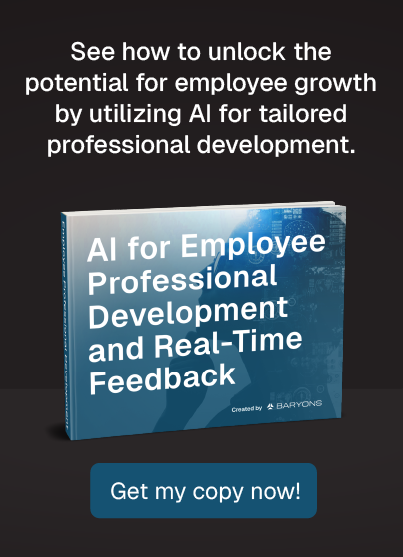
7 Operational Risks of High Employee Turnover
Turnover has shifted beyond a traditional HR issue; it now disrupts essential business functions across the enterprise. In 2023, CFO turnover across the S&P 500 reached 17.4%, with 51% caused by retirement, creating costly leadership gaps and disruption at high levels. Furthermore, 33% of new hires resign within six months, which wastes onboarding budgets and drives up repeat training costs. These patterns hurt financial control, slow productivity, affect compliance, and lower morale. If ignored, turnover becomes a wider business problem—one that puts consistency, performance, and market position at risk. Let’s examine seven major operational risks stemming from ongoing turnover and explore how leaders can intervene before the situation worsens.
1. Financial Strain From Replacement Costs
Talent loss creates unpredictable expenses and weakens profit margins. The hidden costs of replacing employees extend far beyond basic recruitment activities, resulting in financial damage that many leaders fail to anticipate or accurately measure.
- Replacing a skilled employee can cost up to $40,000, which includes recruitment, background checks, interviews, and lost productivity. These costs rise fast with multiple departures.
- For senior roles, expenses may reach 200% of the salary, factoring in bonuses, relocation costs, search fees, and extended onboarding. Replacing a $100,000 manager could cost $200,000.
- The pressure intensifies during emergency hiring situations. Rushed hiring forces organizations to pay premium rates to staffing agencies, offer above-market salaries to attract immediate candidates, and often accept less qualified hires just to fill critical gaps.
Perhaps most damaging of all, ongoing replacement cycles can make budget forecasting nearly impossible. Finance teams cannot predict quarterly expenses when they cannot anticipate which key team members might leave next. This uncertainty undermines strategic planning, delays important investments, and creates cash flow challenges that ripple throughout the organization.
2. Productivity Drops Across Teams
Work slows when key employees leave, causing disruptions far beyond the open role.
- The loss is greater when top performers leave, as they are 400% more productive than the average staff; their departure equals the output loss of four employees.
- Remaining team members face unmanageable workloads, leading to stress, mistakes, and burnout that often trigger more resignations.
- New hires start at zero productivity. Most take three to six months to ramp up, which drags down team output even after roles are filled.
The damage spreads across the organization. Other departments must step in to support struggling teams, resulting in delays, missed deadlines, and a decline in service quality.
3. Knowledge Gaps and Process Disruption
Process disruption worsens in specialized roles where employees once held unique responsibilities or key relationships. Rebuilding those connections takes time and rarely matches the depth that was lost.
- Turnover drains expertise and breaks continuity. The loss of institutional knowledge is one of the most serious—and least visible—costs of high turnover.
- Departing staff take along their years of experience, client history, and key problem-solving skills. This brain drain affects technical work, informal processes, and smooth operations. New hires often miss critical details until costly mistakes happen.
- Poor documentation worsens the problem. Many companies rely on tribal knowledge—the info stored in workers’ heads, not systems. When those people leave, essential steps get skipped, safety is compromised, and compliance lapses occur.
- Innovation slows too. Experienced employees connect ideas, improve processes, and mentor others. When they exit, organizations lose present contributions and future breakthroughs.
Process disruption worsens in specialized roles where employees once held unique responsibilities or key relationships. Rebuilding those connections takes time and rarely matches the depth that was lost.
4. Training Pressure and Escalating Costs
Frequent replacements strain the training system and widen skill gaps across the organization. The constant need to bring new people up to speed creates a resource drain where training budgets expand while overall competency levels stagnate or decline.
- The scale of the challenge is significant: 26.3% voluntary turnover in 2024 compounded the onboarding burden for most organizations. This means more than one in four team members left their positions, requiring companies to find, hire, and train replacements at unprecedented levels while trying to maintain normal business operations.
- Each cycle adds more training costs, often with lower returns on investment. When turnover rates remain high, organizations often find themselves training employees who may leave before there’s any return.
- Compliance and certification programs become bottlenecks that limit operational capacity. High turnover can leave companies without sufficient certified staff to maintain full operations, creating risks that directly affect service delivery and customer satisfaction.
Existing employees shoulder the training burden, pulling focus from their own work. This hidden cost lowers team output and adds to burnout from nonstop onboarding demands.
5. Client Relationship Damage
Turnover hurts loyalty and renewal rates, directly impacting revenue streams and competitive positioning. Clients invest significant time and energy building relationships with specific employees, and frequent staff changes can severely damage these crucial business connections.
- Client trust weakens when primary contacts leave without a proper transition. Customers often feel abandoned, especially when the handoff is rushed. Rebuilding that trust can take years, and during that time, competitors may step in.
- Contract renewals drop during transitions, as clients question the provider’s stability. High turnover signals internal issues and prompts some people to look elsewhere.
- Competitive edge erodes without continuity. When seasoned account managers leave, relationship capital vanishes, making it harder to cross-sell, renegotiate contracts, or defend accounts against rivals.
The damage extends beyond individual relationships to the overall market reputation.
6. Morale Collapse and Cultural Decay
Turnover weakens internal cohesion and triggers emotional fallout that is hard to reverse. The psychological toll on remaining team members is often overlooked but poses a serious operational risk during high-turnover periods.
- According to McKinsey, almost 20% of employees feel dissatisfied with their employers, and high turnover rates can increase this feeling. The remaining staff members begin questioning their own job security and wonder what underlying problems are driving colleagues to leave. This uncertainty creates anxiety that reduces focus and productivity.
- Survivor syndrome causes anxiety and disengagement among employees who remain after waves of voluntary departures or layoffs. This emotional stress significantly reduces productivity and increases the likelihood that additional employees will decide to leave.
- The cultural damage runs much deeper than individual concerns. S&P Global reported that only 2.2% of organizations prioritize well-being in their ESG efforts, despite its link to stronger morale and lower turnover rates. Companies that ignore the cultural impact of turnover often find themselves trapped in destructive cycles where poor culture drives more departures, which further damages culture and drives even more turnover.
Frequent departures without clear explanations erode trust in leadership. Employees start to question if leadership values their satisfaction or simply sees them as replaceable.
7. Compliance and Security Risks
Turnover opens the door to internal threats and regulatory violations that can result in serious legal and financial consequences. These operational risks often remain hidden until serious incidents occur, making prevention absolutely crucial for business protection and regulatory compliance.
- Access control becomes increasingly difficult to manage when team members frequently leave. Former employees with lingering system access create serious security risks, including data breaches, unauthorized entry, or sabotage.
- Data protection weakens as key personnel exit, especially those with access to sensitive customer, financial, or proprietary data. Transition periods often create gaps in data handling and unclear access records.
- Executive turnover increases the risk of IP theft and compliance gaps. Senior leaders hold broad access to confidential information, and without proper knowledge transfer, companies face exposure, especially when leaders move to competitors or leave compliance roles vacant.
Regulatory oversight becomes inconsistent when compliance personnel exit. High turnover in compliance roles can cause organizations to be vulnerable to violations, fines, and legal challenges that could have been prevented with stable, experienced oversight.
Stop Operational Risks Before They Spread
Companies that ignore turnover risk more than just lost talent. Addressing turnover proactively requires significantly smaller investments than trying to rebuild operations after turnover-related damage has occurred. The companies that act early protect themselves from cascading failures that can take years to fully recover from.
To get ahead of turnover-fueled operational risks, companies should implement three critical strategies:
- Review current vulnerabilities and cost exposures. Identify which roles are critical, what knowledge may be lost with specific departures, and the true cost of ongoing turnover.
- Invest in retention systems and knowledge safeguards. Document key processes, build succession plans, implement cross-training, and address the root causes of turnover, not just its aftermath.
- Create a culture that makes people want to stay and do their best. Build environments where employees feel valued, challenged, and connected to the mission.
The choice is clear: Address turnover proactively with strategic prevention measures or deal with its severe operational consequences after the damage has already occurred. Companies that choose prevention will be far better positioned for sustainable, long-term success in increasingly competitive markets.
The $8.8 trillion cost of disengaged employees isn't just a statistic; it's draining your bottom line right now. While your enterprise struggles with distracted staff, costly errors, and customer dissatisfaction, your competitors are solving these problems. At Baryons.ai, we transform employee attention into enterprise profit. Our AI mentor pinpoints focus issues, boosts engagement, and delivers quantifiable productivity gains throughout your organization. Learn how Baryons.ai can leverage your employees' attention to create a competitive edge.
